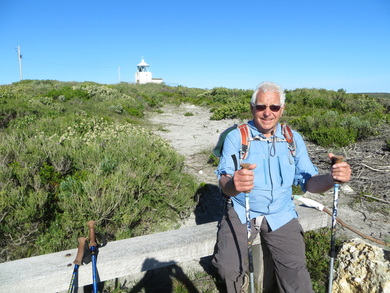Walking meditation – three easy techniques

Walking meditation – three easy techniques
Posted on
Meditation can be hard. The tendency is for the mind to look for stimulation and for most people they are doing a mental shopping list, within a minute or two. However, walking meditations are a great because they are stimulating, making it much easier to maintain focus.
Below are three different techniques you can try out on your next walk.
Walking Meditation; Before you start walking
Prior to setting off, take one minute to prepare. Stand still, close the eyes and smile. Even if you are not feeling particularly happy, the physical act of smiling (even if it is fake) will make you feel better.
Now take in a few deep breaths holding the breath for a short moment at the top of the inhalation and the bottom of the exhalation. Exhale slowly. With each exhalation try to let go of a bit of tension in your body. A good way of doing this is to say in your mind, “Let go”, or “relax” as you exhale. Allow your breathing to return to normal and you will feel a little more relaxed almost instantly.
Technique One; Being mindful of the body
This is a really great walking meditation for those with a very active mind and the technique we recommend starting with. It is simple. Start off by walking and being conscious of your breath. Your breath might be faster than during a normal meditation, but that is absolutely okay. Just observe the inflow, and outflow for ten breaths.
Next, shift your attention to the soles of your feet whilst still being mindful of the breath. You are not looking for discomfort or to label the sensations in the soles, but just to notice what you are feeling. It could feel dull, or warm, or you might notice your foot rolling as it makes contact with the ground. Whatever the sensation, do not try to change it, just pay attention to it.
After a minute or so, shift your focus to your knees. You can alternate between the two knees or concentrate on just one, it is up to you. Really go inside the knees and go for the detail. Notice the ligaments and the sensation at the back of the knees.
You can then shift your focus to the hips, then back, then finger tips and shoulders. All will provide a myriad of sensations to hold your focus. Once at the shoulders you can then head back down the body, or change to a different walking meditation technique.
Technique Two; Getting the rhythm
This is a slightly more advanced technique as there are less things to focus on, however the technique is still very simple. Again, start by being mindful of the breath. Then start to count the steps for each cycle of breath. Begin counting at the bottom of the inhalation and then start the sequence again at the end of the exhalation. If you are walking fast and breathing slow this might be as many as 10 steps for each breath, however it could be as short as 2-3. Soon you will be in a rhythm with both your steps and your breath. You can continue this walking meditation technique for as long as you like.
Technique Three; Mindful of your surroundings
This is the most difficult technique to maintain your focus however it is also probably the most rewarding. We recommend trying it after you have done a bit of either technique one or two.
Again, start by being conscious of the breath. Once you are relaxed and lightly focused on the breath, shift your focus onto the world around you. There should be no shortage of things to look at. The trick is not to allow the stimulus to trigger thoughts. The aim is to observe the details in what you see without generating any mental traffic.
I have had most success with this technique in natural settings whilst shifting my attention between the smallest, and then largest details. For example, I will start by looking closely at a leaf, or bark and then shift my focus to the view. Then back to a flower or a rock. You can also include smells, sounds as well as textures into this technique.
This technique is best done slowly. Don’t stare for too long at any one piece of stimulus as you don’t want to allow the mental traffic to start. Look for the details with trying to name them or look for explanations, just merely observe. If you do get invade by a pesky thought, just let it go and return to the detail of the world around you.
At some point you may also find it helpful to include some positive affirmations, such as “everything is beautiful” or “everything is connected”. Anything that resonates with you.
So there you have it
Three techniques to try out on your next bushwalk. I hope you have enjoyed this post. If you have any other techniques you would like to share, please leave them in the comments below.
Happy trails.



